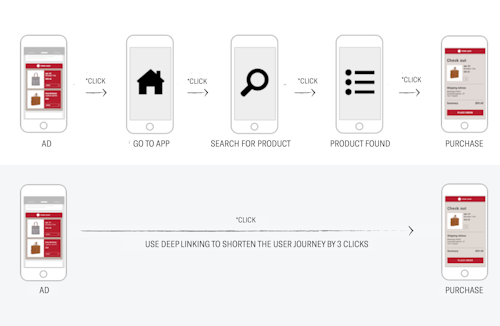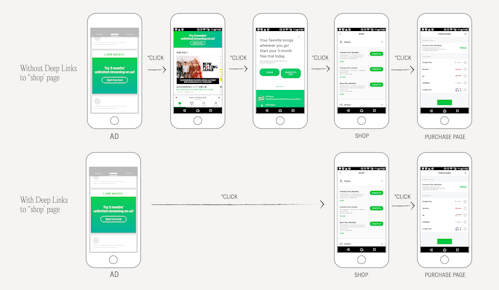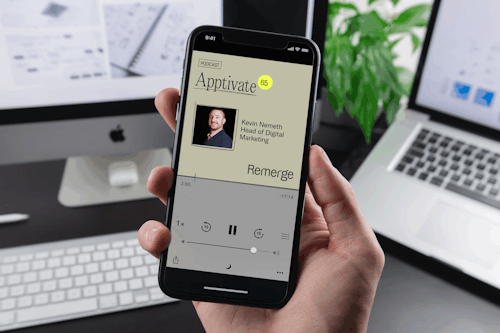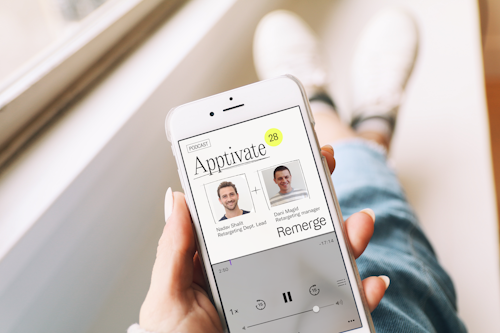Case Study: Why Deep Links Matter for Your Revenue Goals
January 31, 2019

Every year the number of mobile apps continue to rise, with the entire mobile app industry predicted to bring 188.6B USD in revenues by 2020 (a 271 % increase from 2015). With this in mind, it’s no wonder that 90% of CMOs think that user experience will be part of their strategy by 2020. However, there’s still a lot to be done when it comes to keeping users engaged throughout the purchase funnel.
Deep links in the app retargeting perspective
Companies that know how to increase their mobile-driven revenue are aware that customers shouldn’t be left alone within the app. Similar to traditional in-store shopping experiences where the potential buyers expect a sales associate ready to entertain questions or to upsell, the mobile experience should serve the customer as much as possible by using technologies like deep links to make the the shopping experience more smooth . In the words Steve Krug, author of “Don’t Make Me Think”, a best-selling book on web usability, “if something requires a large investment of time—or looks like it will—it’s less likely to be used.”
So what's the deal with deep links? A real life scenario
Imagine browsing a pair of shoes in a shopping app, then not going through with the purchase due to reasons like distraction, not being convinced, so on. If your shopping app runs retargeting campaigns, you’ll shortly get an ad for that same product in another app and possibly click it.
Where do you expect to be taken? To the homepage of the app, or to the purchase page of the shoes? We’re guessing it’s the latter. If you end up on the home page, chances are you’re not going to go looking for that same pair of shoes, especially if you weren’t sold on them in the first place. However, if you’re brought straight to the purchase page, you are more likely to convert.

A deep link is comparable to a web link (a URL) that takes the user directly to a specific page. While a link takes you to a specific webpage, a deep link is a specific link that creates more entry points for apps. Deep links assist with the transition from a call-to-action outside an app to a specific place within the app.
Be it the page the user dropped off, the checkout page, or the subscription page, deep links can be placed anywhere the marketer wants the user to reenter the app directly upon clicking, anywhere but the home page (as context is lost here). These can be used with different retargeting methods ranging from ads to push notifications and email marketing.
Three steps to get started now
Is it really worth the effort to set this up? Yes, absolutely. Deep links are vital in achieving your revenue target.
1. Map out entry points
The first step is to identify the re-engagement entry points within your app. These can vary depending on your vertical. Look at the user funnel in your app to identify which points are key conversion events. You want to create deep links that lead to these precise points.
Those entry points may vary by vertical. For example:
- E-commerce: deep link to a specific product or product category. If the product was advertised, a user can click on the product ad and have it directly added in their basket.
- Gaming: deep link to a direct spot in-app or in the game shop. The user can immediately buy the next item needed.
- Travel: deep link to hotel categories, flight destinations, dates selection page for the departure-destination combination shown in the ad
2. Check the documentation of your attribution provider
After mapping out all conversion events, you’ll want to implement deep links as part of your tracking links. Attribution providers will usually offer support with this step.
A note regarding deep linking in Apple: With the introduction of iOS 9, the universal link has become the new standard for deep linking in Apple devices. The universal link makes the user experience more seamless, while sharing data more securely. Check your attribution provider’s content to find out how to set up universal links within tracking links. Most of them already have a market solution.
3. Check back with your retargeting partner
Once you have your deep links in place, speak with your account manager to make sure your deep links are properly set up in your tracking URLs.
LINE Music improves conversion through effective deep linking
LINE Music, a Japanese music streaming service, ran an A/B test campaign to test the efficacy of proper deep linking. Ads originally redirected users to the home screen, where they quickly became distracted by browsing through songs. The test used deep links to take users directly to the subscription page.
- Goal: To drive more subscriptions to the music streaming app
- Target: Non-subscribers
- Creative Strategy: Creatives were boosted with the right marketing message in which users were offered three months of free streaming upon signing up
- Conversion Event: Users were shown an ad which brought them directly to the subscription page via a deep link. The test and control group were shown the exact same creative with the same message and CTA. However, one brought users to the home page (control), while the other brought users to the subscription (test).
- The result: an uplift in conversion by 63% in Android and 99% in iOS.

The same concept as illustrated above, with LINE music ads and the corresponding purchase page.
Conversion Rate Uplift

Case Study with LINE Music: Deep Link VS No Deep Link
Conclusion
Implementing deep links in your app will require some technical assistance, but once this is in place the benefits will outweigh the set-up effort:
- Deep links are essential in getting the most out of your retargeting campaigns
- Mobile solutions are needed in a now mobile world. A wholistic approach gets the best impact. Understand your user, have the right creatives, and set up the proper links.
- To increase your conversion rate, map every conversion event and pair it with a corresponding deeplink.
If you’re interested on retargeting with Remerge, we’ll help you define the right strategy and the technical requirements to get the best results.





